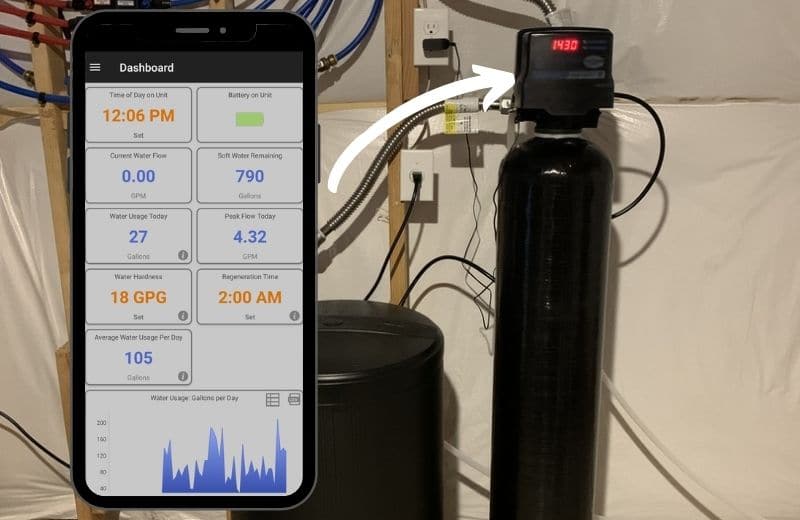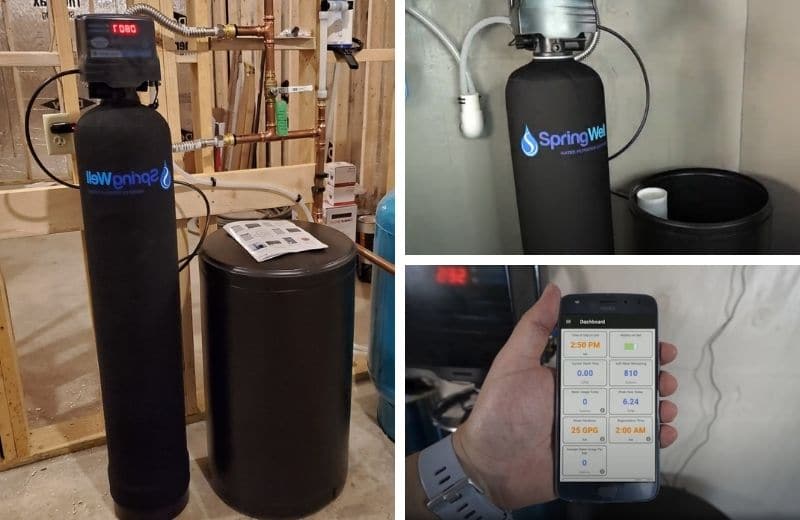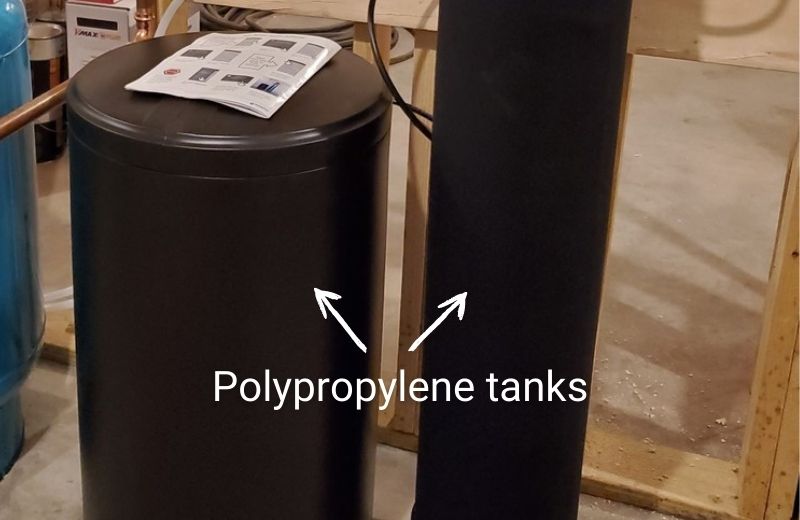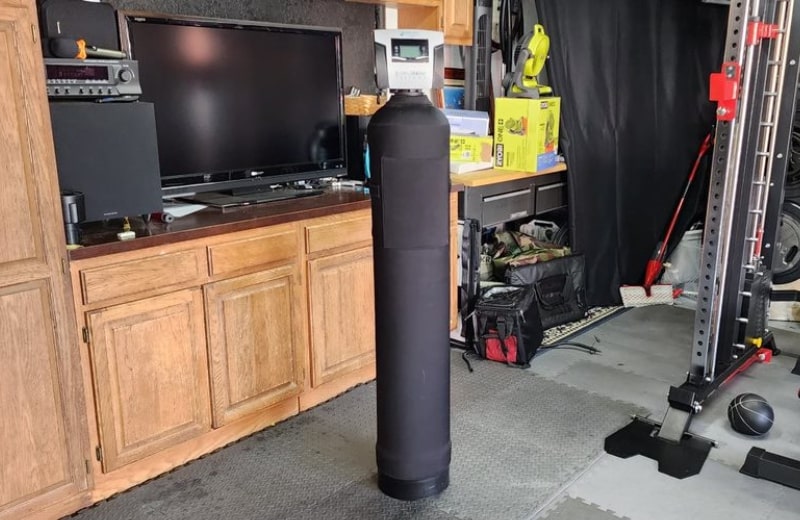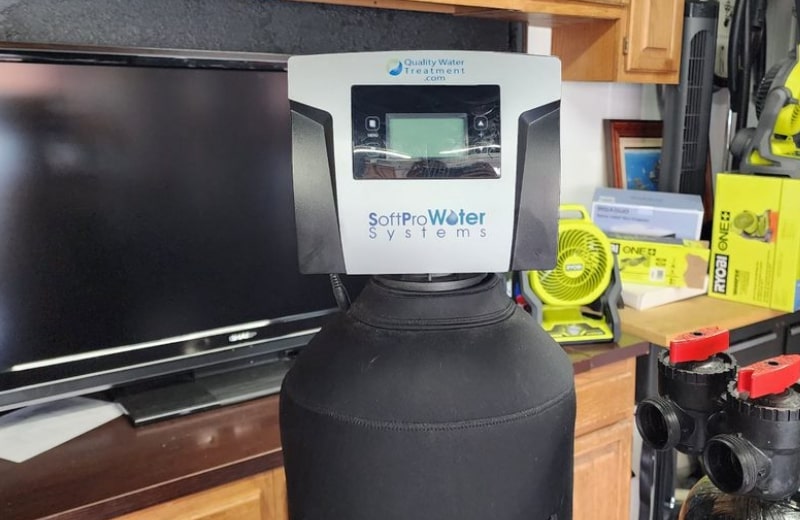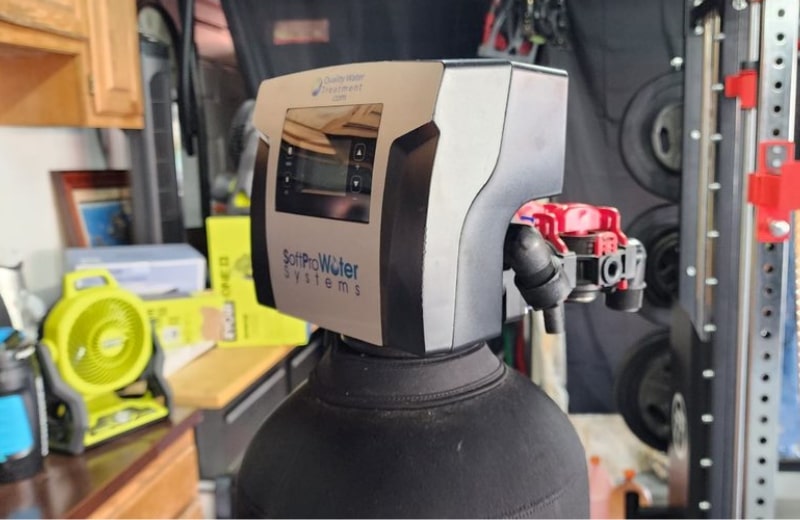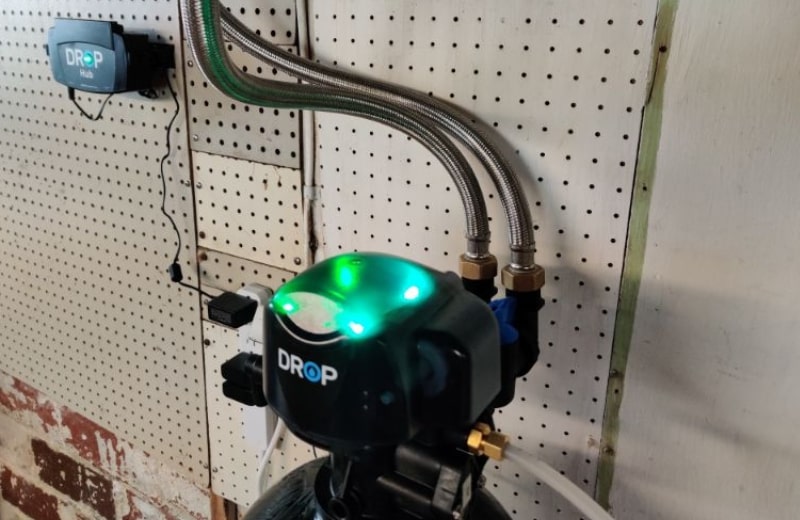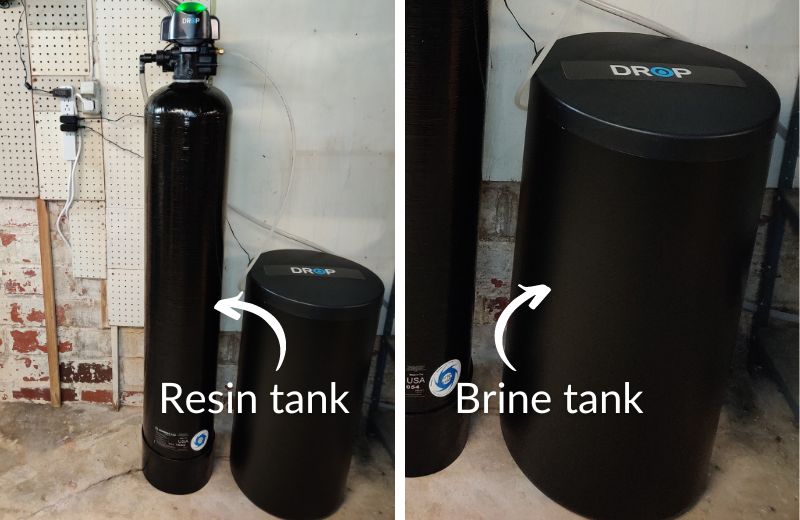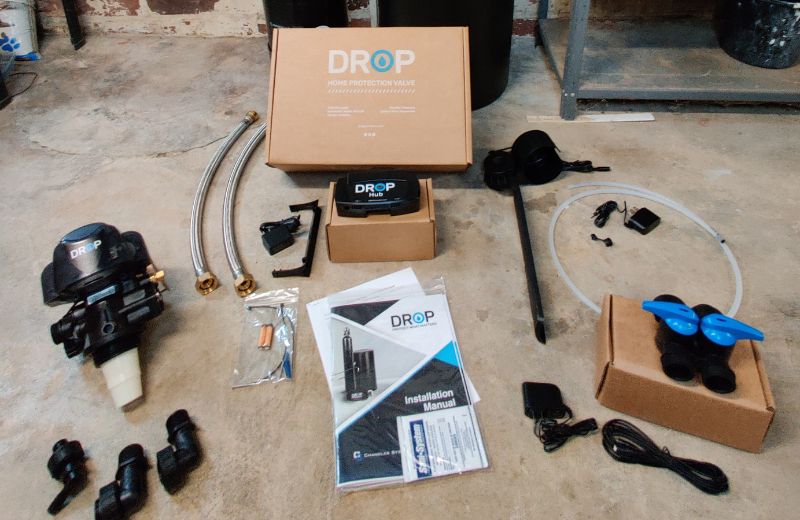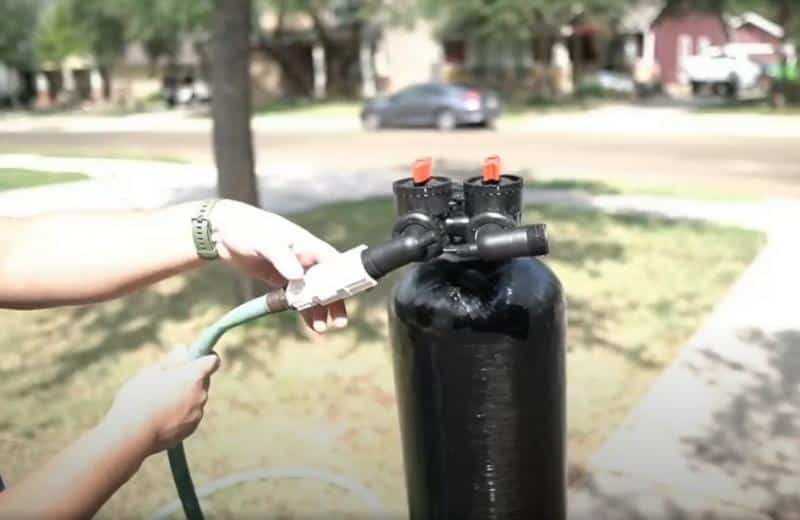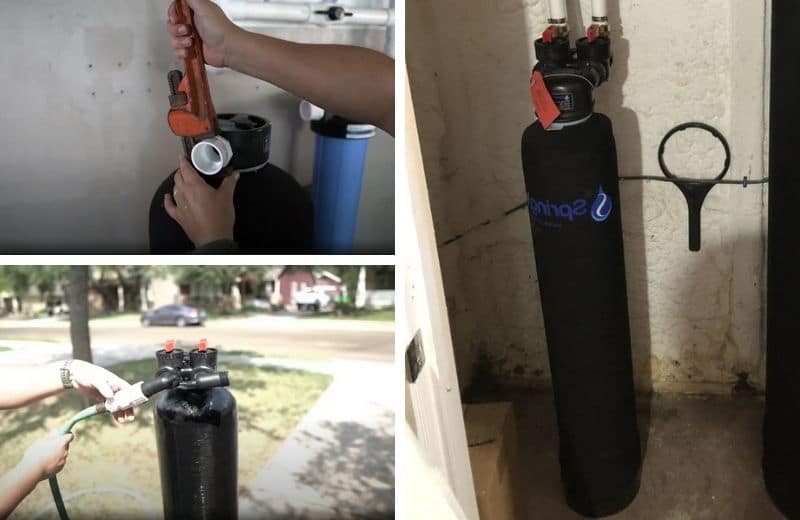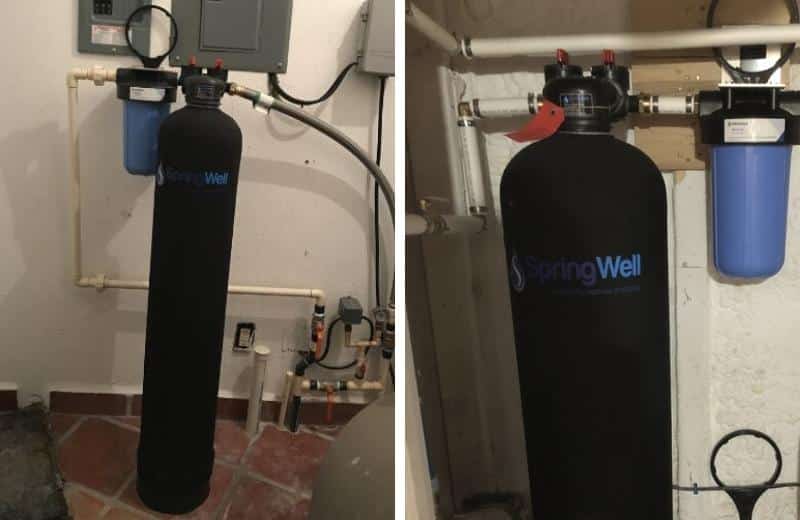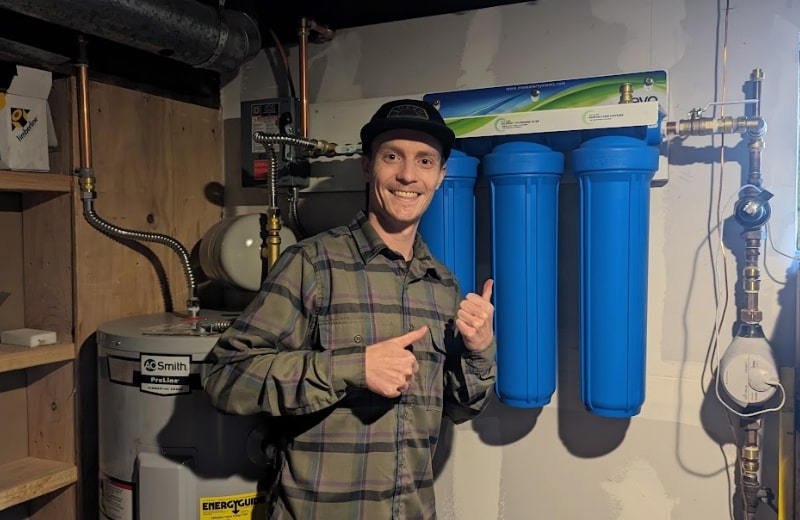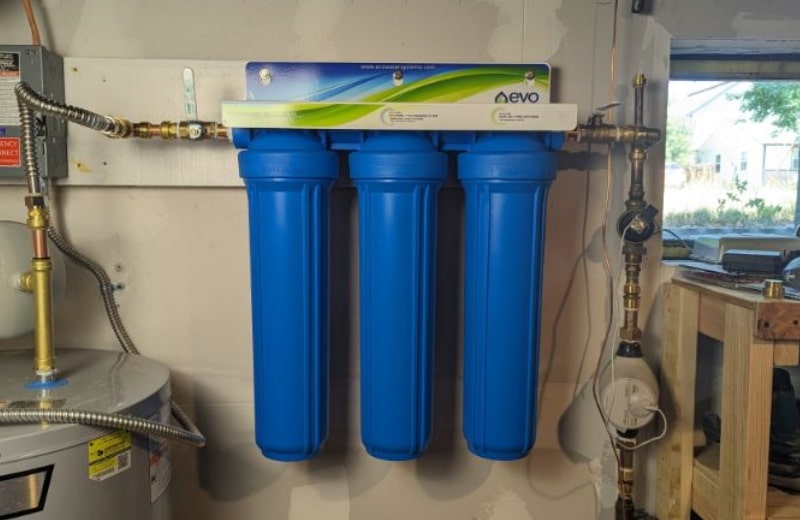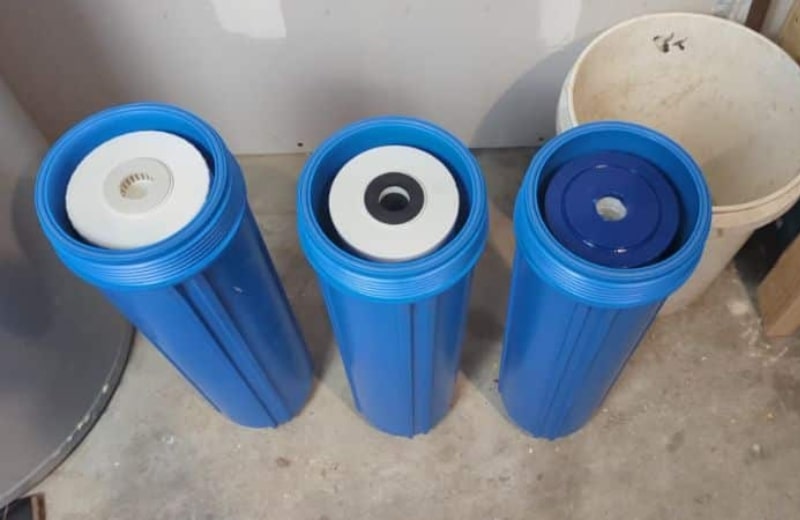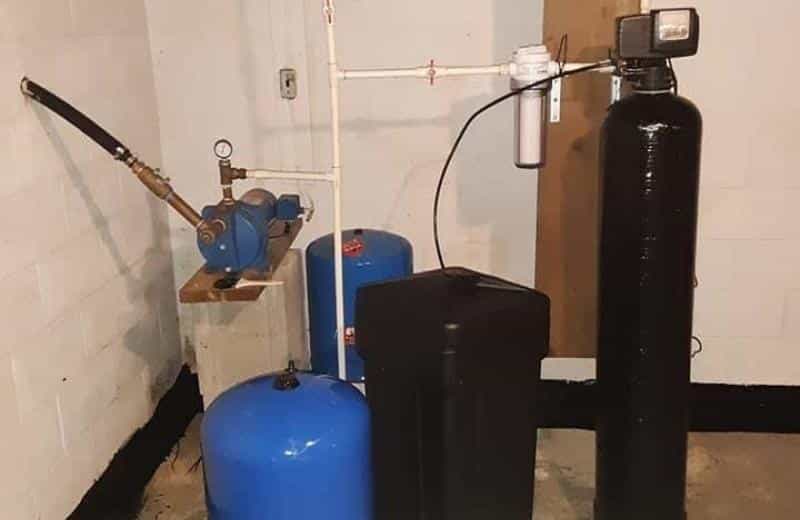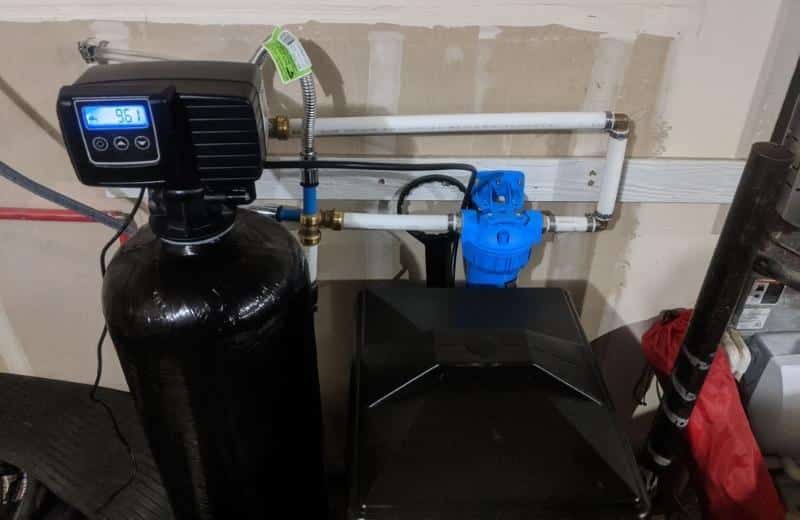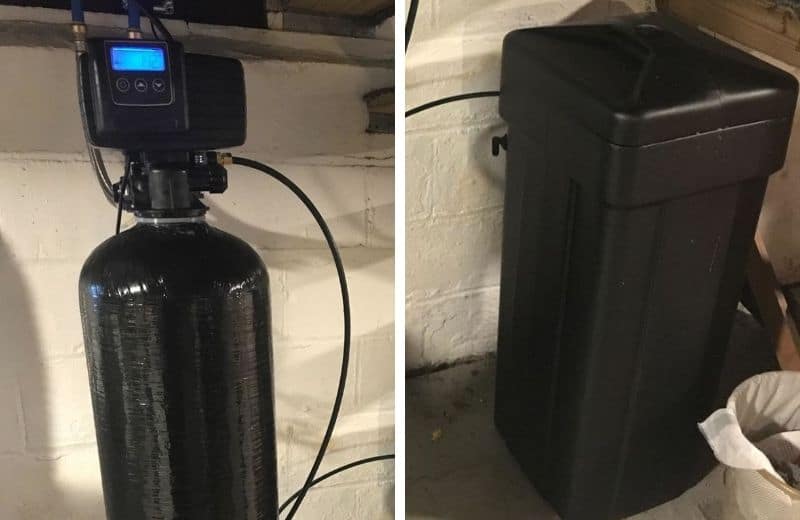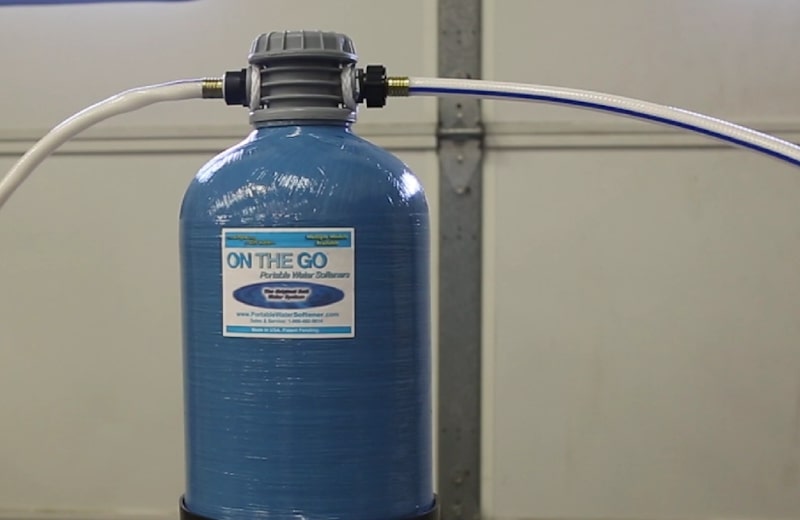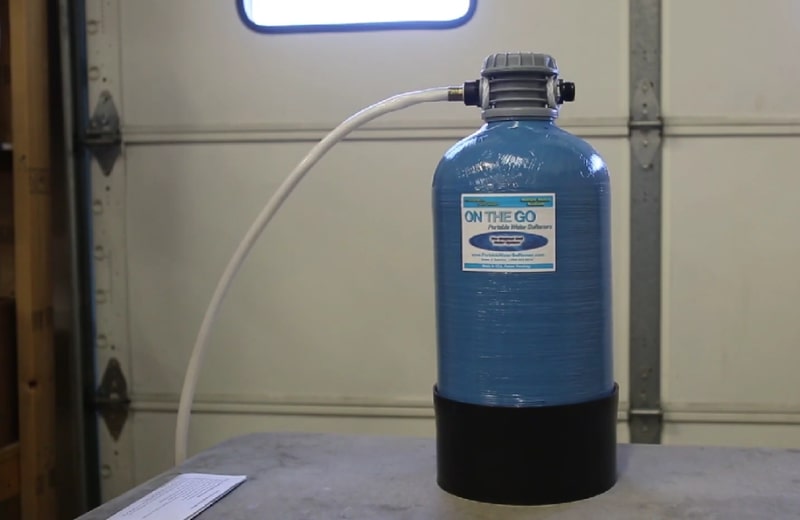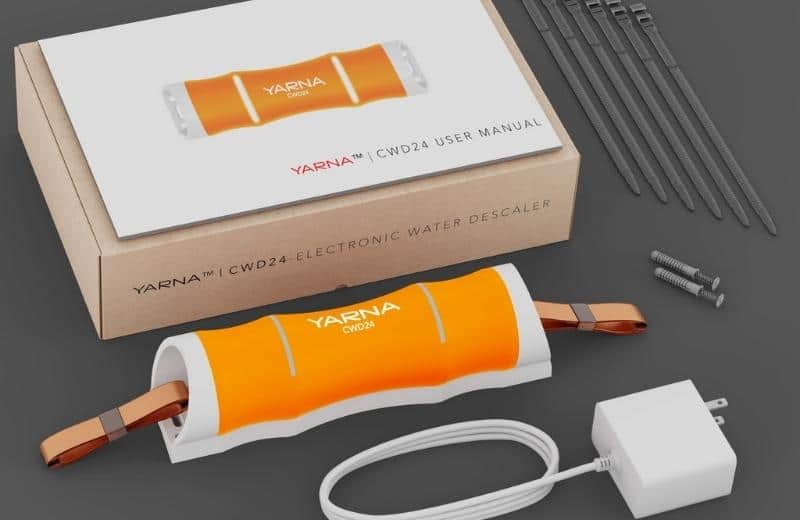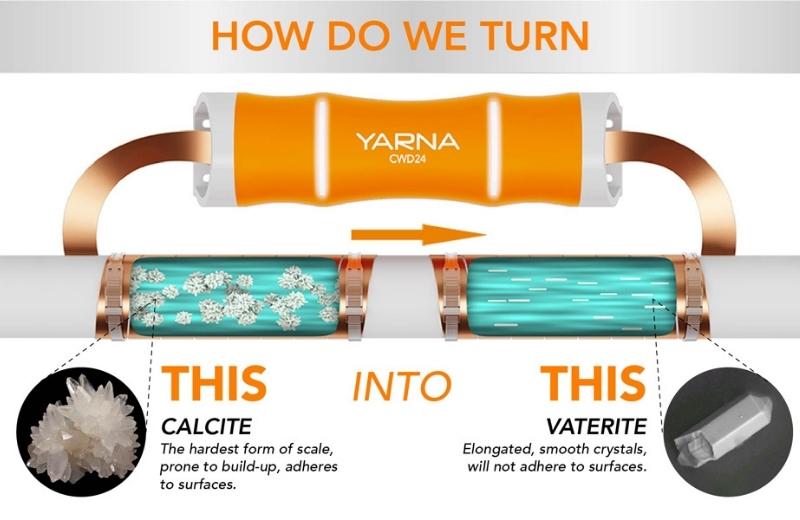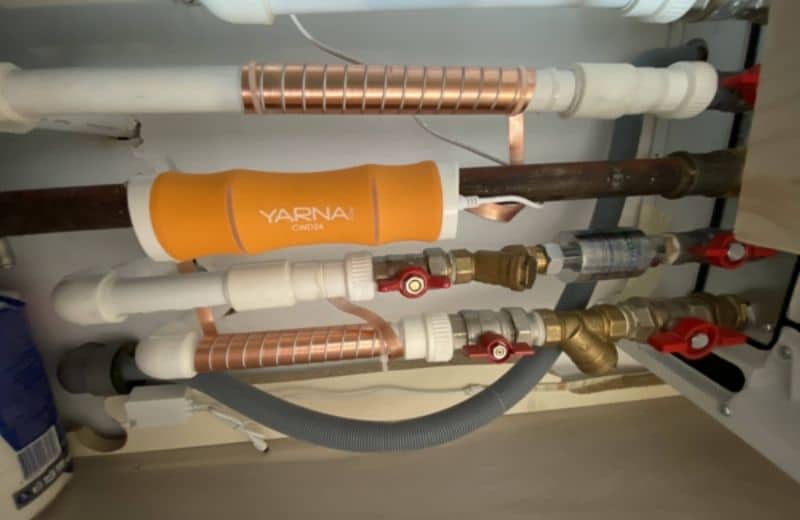We’ve personally tested and compared some of the most popular water softeners available in the US, using our own objective data and objective analysis to rank them in this guide.
These are the best water softeners in 2025 in terms of softening capability, efficiency, quality of build, customer satisfaction, and of course, affordability.
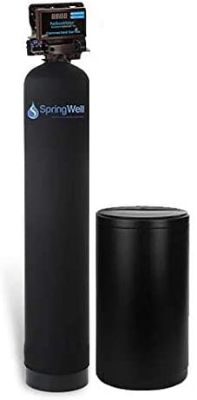
SpringWell SS
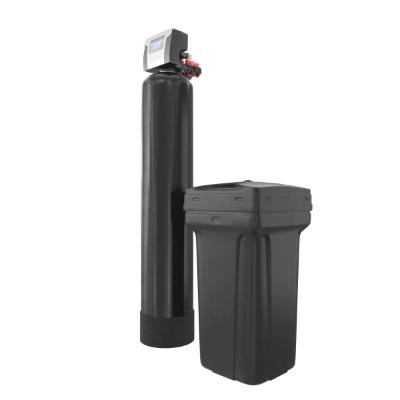
SoftPro Elite
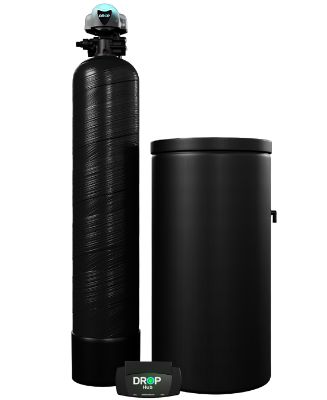
DROP Smart Water Softener
An estimated 85 percent of the USA has hard water. Considering the damage that hard minerals can do to a plumbing system, it’s no surprise if you want to find a residential water softening solution ASAP.
In our best water softener reviews guide, you’ll learn:
- Which 8 water softeners are worth your money in 2025
- How we selected the products that came to be on this list
- The absolute essentials that you need to know before spending your hard-earned cash on a water softener for your home
Table of Contents
🥇 Best Water Softeners
- Best Overall & Salt-Based: SpringWell Salt Based Water Softener System
- Runner Up: Softpro Elite
- Premium Choice: DROP Smart Water Softener
- Best Salt-Free: SpringWell Futuresoft Salt-free Water Softener
- Top Cartridge Based Conditioner: Kind E-2000
- Budget Choice: Fleck 5600SXT
- Best Portable Option: On The Go Portable Water Softener
- Best Electronic: Yarna Capacitive Electronic Water Descaler
📊 Comparison of the Best Water Softeners
| Product | SpringWell SS | SoftPro Elite | DROP | Springwell Futuresoft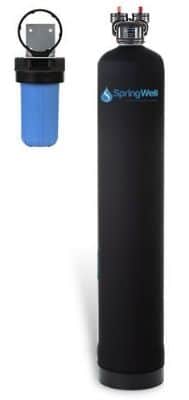 | Kind E-2000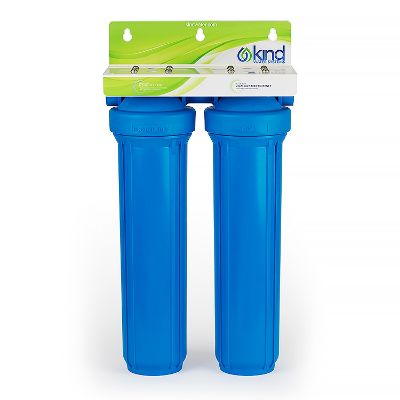 | Fleck 5600 SXT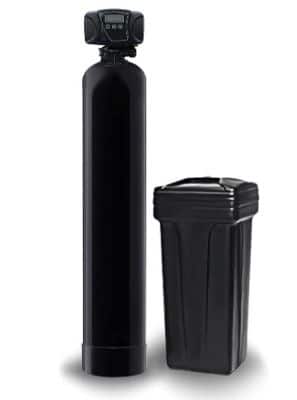 | On The Go 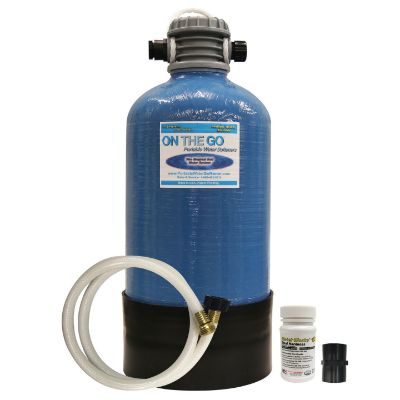 | Yarna Descaler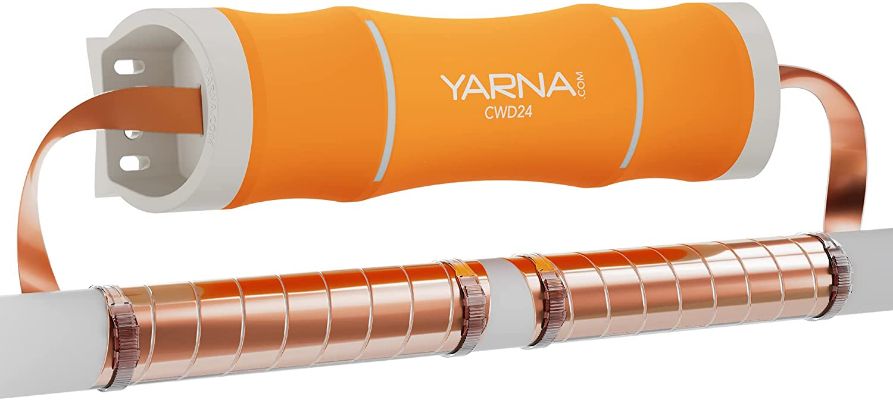 |
|---|---|---|---|---|---|---|---|---|
| Ranking | 1st | 2nd | 3rd | 4th | 5th | 4th | 7th | 8th |
| Ratings | 5/5 | 4.5/5 | 5/5 | 4.5/5 | 4.5/5 | 4.5/5 | 4.5/5 | 4/5 |
| Price | $1530.93+ | $1129+ | $1992.40+ | $1597.31+ | $1074.23 | $1189+ | $272 | $359.99 |
| System Type | Salt-Based | Salt-Based | Salt-Based | Salt-Free | Salt-Free | Salt-Based | Salt-Based | Electronic Descaler |
| Capacity/ Max Hardness | 32K - 80K | 24K - 110K | 32K, 48K or 64K | 81 GPG | 75 GPG | 24K - 80K | 8K (Standard) or 16K | none |
| Flow Rate (GPM) | 11 - 20 | 10 - 32 | 10 - 12 | 11 - 20 | Up to 15 GPM | 7 - 15 | 5 GPM | n/a |
| Warranty | Lifetime for valves 10 years for tanks 7 years for electronic head | Limited lifetime for valves Lifetime for tanks 7 years for circuit board | 5 years | Lifetime for valves 10 years for tanks 7 years for electronic head | Lifetime (limited) | 5 years for valves 10 years for tank | 1 year | 1 year |
⭐ Reviews – Top Water Softeners of 2025

SpringWell SS
The SpringWell Salt-Based Water Softener System (SS) is our top pick as the best conventional ion exchange water softener currently on the market. We love this salt-based system because it uses a durable, chlorine-resistant 10% crosslink resin and reduced 97.5% of calcium and magnesium hardness minerals in our testing.
We tested the SpringWell SS on our water in the Rocky Mountains near Telluride, Colorado. It uses the conventional cation exchange softening process, which reassured us that our water hardness issues were being properly addressed (ion exchange is the only softening process, which removes calcium and magnesium rather than simply preventing them from forming scale). Plus, the resin used in the softening tank is 10% crosslink – an upgrade from the less durable 8% crosslink resin that’s used as standard in many other systems we tested.
| SpringWell SS Configurations | Price |
|---|---|
| SS1: 1-3 Bathrooms | $1530.93 |
| SS4: 4-6 Bathrooms | $1683.59 |
| SS+: 7+ Bathrooms | $2086.32 |
Best For:
Families of any size looking for the best-value salt-based residential water softener, and anyone who prefers to spend their money on a trusted brand. We think the SpringWell SS softener is the best choice for most people because it’s competitively priced and reduced more than 97% of hardness in our testing.
What We Like:
- Uses ion exchange to remove scale-causing minerals, guaranteeing results
- Nearly eliminated hardness in our water
- 10% crosslink resin lasts twice as long as the 8% resin used in most water softeners
- Available in multiple sizes & flow rates
What We Don’t Like:
- Difficult to DIY install – we got our system professionally installed
- No sediment pre-filter included
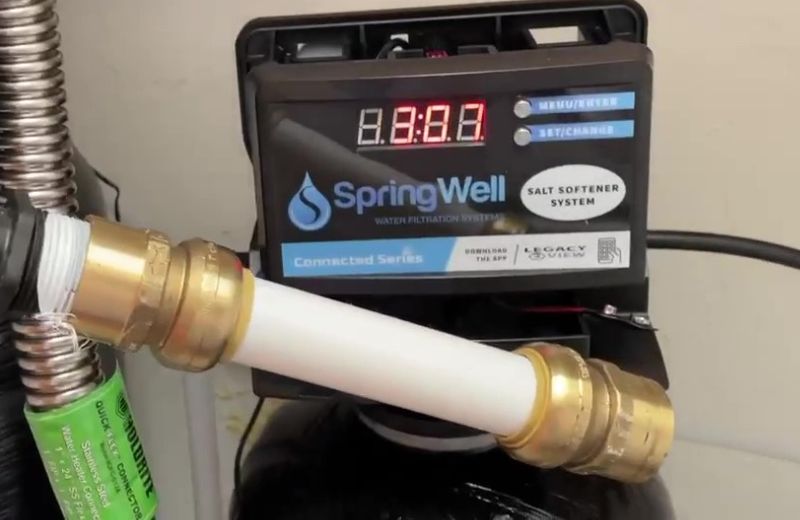
Softened Our Water With Almost 100% Effectiveness
SpringWell doesn’t go into specifics when discussing the SS unit’s water softening capabilities. So we were super curious to test the system ourselves and see how effectively it softened our own water.
We lab-tested our water in November, then installed the SS the following January, and tested our water again in March.
Our initial water sample contained 13.71 grains per gallon of hardness (water with 7.1-17.5 GPG of hardness is considered “hard”).
Post-treatment in the SS, our water hardness had dropped to just 0.34 GPG, so the SpringWell SS had reduced 97.5% of calcium and magnesium minerals.
We noticed some physical differences in our water quality that confirmed to us that the SS was doing its job. Our water had a smooth, silky feel due to the presence of sodium ions, and our skin no longer felt “sticky” after washing (a common complaint we’d had when our water was hard due to the soap scum formation).
Our water tasted slightly different because it no longer contained calcium and magnesium, and its sodium concentration had increased. But we didn’t notice a salty taste – if your softened water tastes salty, your salt settings are probably too high.
Throughout our testing period, we detected no new scale formation on our faucets, showerheads, and other fixtures and appliances. We’d expected this outcome given that the SS had thoroughly removed the minerals responsible for scale formation.
We’ve shared our laboratory test results for the SpringWell SS below:
| Contaminant | Measurement | Pre-Filtration | Post-Filtration | % Change |
|---|---|---|---|---|
| Total Hardness | PPM | 220.84 | 5.62 | -97.46% |
| Calcium Hardness | PPM | 214.78 | 5.3 | -97.53% |
| Grains per Gallon | Grains | 13.71 | 0.34 | -97.52% |
| Iron | PPM | 2.37 | 0 | -100.00% |
| Manganese | PPM | 0.002 | 0.022 | 1000.00% |
Durable, Quality Design & Low-Maintenance Operation
The SpringWell SS is made from certified components, although it doesn’t hold any official materials safety certifications – something we’d love to see in the future.
The tanks are made from polypropylene, which is known for being lightweight, durable, and corrosion-resistant. Unsurprisingly, the unit is big, bulky, and heavy, and the media tank is pre-loaded with resin, so it’s especially weighty.
| Upgrades | Price |
|---|---|
| UV Water Purification System | $1100.99 |
| Reverse Osmosis Water Filter System | $442.23 |
Our Installation & Maintenance Experience
Installation takes around 4 hours, and we chose to get our unit installed by a professional plumber given the risk of getting something wrong (although SpringWell says the install process is DIY-friendly).
We tested the SpringWell WSS, which comes with the SpringWell AIO system too. Not all the parts we needed to install this specific configuration were included. Our plumber also recommended that we upgraded from the flimsier plastic fittings to sturdier ones made of brass, and not all the required information was provided for our installation – our plumber had to contact tech support, and their answers weren’t always very helpful.
As for maintenance, we just topped up the sodium levels in the brine tank around once every month. The tank holds up to 200 pounds of salt and has a wide mouth, so topups were easy. The softening resin needs replacing every 8 years or so, which surprised us – we thought it’d last longer since it’s upgraded 10% crosslink resin.
The SS uses demand-initiated regeneration, so it only regenerates when it needs to, making it more efficient than timer-based water softeners. In our testing, the system regenerated about once a week, adding around 400 gallons to our monthly water bill. It also slightly increased our electricity bill by around $10 or so per month.
Read the full review: Springwell Salt Based Water Softener System Review
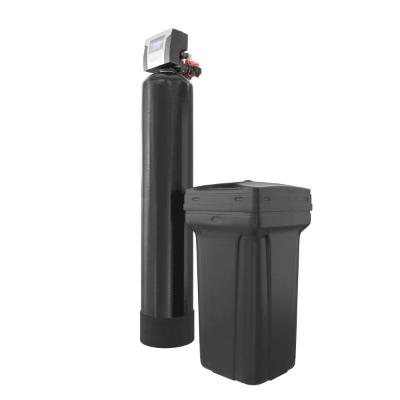
SoftPro Elite
The SoftPro Elite is our second choice for the best overall water softener systems that use salt. This system blew us away with its efficiency-boosting features, including upflow tank design, limited backwashing, and demand initiated regeneration.
This water softening system doesn’t have some of the convenient features of the SpringWell SS range or the smart functioning of the DROP softeners, but it’s available in an impressive seven grain capacities, so it’s ideal if you want a water softener that’s accurately sized for your exact daily soft water requirements.
Key Features
- Highly efficient performance – The SoftPro Elite helps save on both salt and water consumption during its operation. Its upflow design allows for a more exact resin recharge, and backwashing only occurs every fifth regeneration cycle, minimizing water waste. According to SoftPro, the Elite uses only 3 bags of salt per year – max.
- Demand initiated regeneration cycles – The unit is powered by next-gen sensors, which trigger a quick demand initiated regeneration cycle outside of the normal scheduled time if the resin gets below a 3% threshold. What does this mean in simple terms? You’ll never go without soft water because the SoftPro Elite will automatically replenish the resin whenever necessary.
- User-friendly LCD screen – Lets you set a variety of presets including auto-refresh, auto-variable backwash, vacation mode, and auto reserve (some useful extra features).
- Affordable system – Prices start at around $1,600. That’s a couple hundred more than the smallest SpringWell SS model, but slightly cheaper than the DROP softeners. You pay more upfront to spend less on maintenance in the long run.
Best for
Anyone looking for a highly efficient softening system that perfectly suits their water usage. The unit comes in seven grain capacities, which means there’s a system size to suit every family size. If standard softener sizes don’t typically suit your needs, you’ll appreciate the fine-tuned sizing options offered by SoftPro.
Pros
- The SoftPro Elite is one of the most efficient water softeners we’ve tested, using up to 50% less salt than a standard salt-based water softener.
- The SoftPro’s resin lasts up to 20 years – that’s twice as long as the average 8% resin found in most water softeners – and comes with a reassuring lifetime warranty. Worried you won’t like the system? It’s backed by a no-risk guarantee, so you can get your money back in the unlikely event that you’re unimpressed.
- You can choose from a total of seven system sizes, from 24,000 to 110,000 grains. Whether you’re a single-person household or an office manager, you’ll find a SoftPro system that’s ideally sized for your property.
- The system is manufactured by the folks at Quality Water Treatment, a brand with more than 30 years’ experience. We’ve read reports about outstanding customer support from the QWT team.
| SoftPro Elite Configurations | Price |
|---|---|
| 24000 | $1129 |
| 32000 | $1229 |
| 40000 | $1289 |
| 48000 | $1369 |
| 64000 | $1419 |
| 80000 | $1629 |
| 96000 | $2189 |
Cons
- There is no base model for this system.
- As a salt water softener with a brine tank, the SoftPro requires salt top-ups – even if it is more efficient than other salt water softeners. We wouldn’t recommend it for anyone who doesn’t want to commit to long-term maintenance.
Read the full review: SoftPro Elite Review (2025)

DROP Smart Water Softener
Our top pick for the best premium whole-house water softener is the DROP Smart Water Softener. This high-tech water softener integrates with the DROP App and DROP Hub to let you monitor the system on the go and shut off water to your home if a leak is detected.
What else should you know about this softener? It’s a traditional salt-based system, so it eliminates calcium and magnesium, and it has a 9V battery backup in case you ever lose power. Plus, it comes with a reassuring 5-year warranty.
Key Features
- Smart app connection & DROP Hub integration – The DROP Smart Water Softener connects to the DROP app, allowing you to monitor and program the softener from any location. It also integrates with the DROP Hub smart water monitor and has a patented piston design that shuts off water if a leak is detected (leak detectors sold separately).
- Available in three configurations – You can buy this water softener in three configurations: 27,000 grains, 40,000 grains, and 54,000 grains. The smallest model can treat up to 60 grains of hardness, while the mid-sized model can tackle up to 80 grains, and the largest model treats up to 100 grains.
- Also reduces iron & manganese – All three configurations of the DROP softener can reduce up to 5 PPM of clear water iron and manganese.
- Fast flow rate – The smallest S-32 system has a decent 10 GPM service flow rate, while the S-48 has an 11 GPM flow rate and the S-64 has a 12 GPM flow rate.
| DROP Smart Configurations | Price |
|---|---|
| 32000 Grains | $1992.40 |
| 48000 Grains | $2192.20 |
| 64000 Grains | $2458.00 |
Best for
Folks looking for the smartest premium water softener that gives them the most detailed and informative insights into their softener performance and the most remote control over their system for convenience and peace of mind.
Pros
- The DROP Smart Water Softener brings together all the features you didn’t know you needed for convenient operation and peace of mind when you’re out of the house. If you pair this system with the DROP Leak Detectors, you get the three benefits of a premium water softener, a water conservation system, and home leak protection in one.
- You can choose to extend the resin lifespan if you prefer to spend more upfront to reduce your maintenance down the line. We appreciate that you have the choice of buying the system with the 8% resin as standard, but the longer-lasting 10% resin is available on request.
- As for performance, this system won’t let you down. With a fast 10 GPM+ flow rate and the ability to tackle up to 100 grains of hardness, it’s well equipped to soften even the hardest water supplies – and remove iron as an added bonus.
- You get so many conveniences from connecting the DROP softener to the manufacturer’s app, including the ability to control the system from anywhere, and access to water usage data and history.
Cons
- If you want to enjoy all the benefits of this system and use it to the best of its abilities, you’ll need to spend additional money on the DROP Leak Detectors.
- The softener only works when used with the DROP Hub.
- The upfront cost (prices starting at around $1,800) is higher than average – you’re paying for a premium system.

SpringWell Futuresoft Salt-free Water Softener
In our opinion, the SpringWell FutureSoft is the best overall salt-free water softener system. The system uses TAC, one of the most research-backed scale-control processes, which almost completely prevented scale formation in our home but had none of the negative effects of a conventional softener on our water quality.
We tested the SpringWell Futuresoft on water in Arvada, Colorado. We were drawn to this system for a few reasons: SpringWell promises up to 99.5% scale reduction, even for extremely hard water, and the lack of a brine tank and automatic backwashing meant maintenance-free operation.
Like the SpringWell SS, the Futuresoft comes in three sizes/configurations (we went for the smallest FS1):
| SpringWell Futuresoft Configurations | Price |
|---|---|
| FS1: 1-3 Bathrooms | $1597.31 |
| FS4: 4-6 Bathrooms | $1960.43 |
| FS+: 7+ Bathrooms | $2657.63 |
Best For:
Anyone looking for the best salt-free water conditioner that provides almost the same scale reduction as salt-based water softeners, without increasing the water’s sodium concentrations or requiring regular salt top-ups.
What We Like:
- Prevented nearly all new scale formation in our testing
- Didn’t alter our water taste or feel
- Costs virtually nothing to maintain
- Long media lifespan of 1 million gallons/6 years
What We Don’t Like:
- No way to prove performance; doesn’t soften water
- Requires additional pre-treatment if used for well water
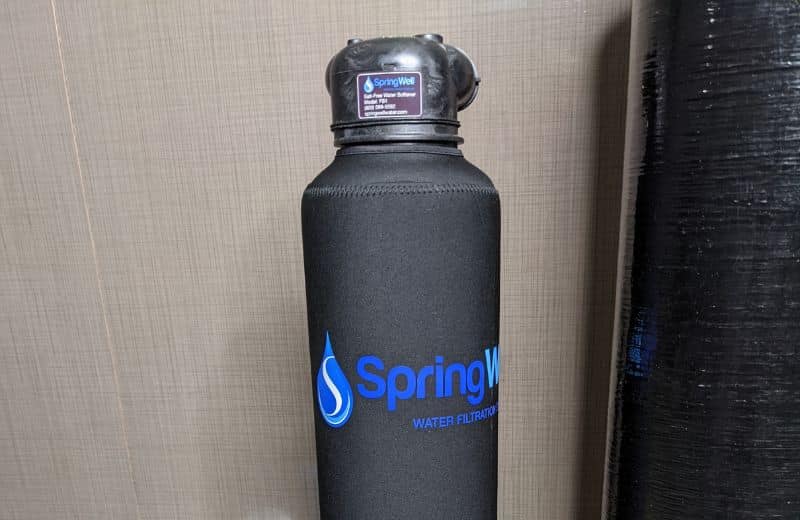
| Upgrades | Price | Uses |
|---|---|---|
| UV Water Purification System | $1100.99 | Boil water advisory protection |
| Whole House Water Filter System | $1016.44 | Whole house water contaminant reduction |
| Reverse Osmosis Water Filter System | $442.23 | Drinking water |
Greatly Minimized Scale Formation
We couldn’t use water quality testing to evaluate the SpringWell Futuresoft’s performance because it doesn’t actually remove hardness minerals. Instead, it uses a conditioning process called template-assisted crystallization (TAC) to crystallize these minerals, preventing them from adhering to surfaces and forming scale.
So our main point of testing was to monitor our surfaces – namely the underside of our shower head and our kitchen and bathroom sink faucets – for new scale formation.
Before installing the Futuresoft, we cleaned these surfaces with a commercial-grade descaler, so they were as close as possible to scale-free. We then checked the surfaces every day to see if any new scale had formed.
A small amount of scale formed over time in these locations, but it wasn’t tough or abrasive, and we could easily wipe it away. That said, it didn’t completely prevent scale like the SpringWell SS, and you’ll probably still notice some mineral spotting like we did – the difference is that it’s much more manageable.
Salt-Free Conditioning Benefits
Because the Futuresoft is a salt-free conditioner, it didn’t alter our water quality or feel like the SpringWell SS. That meant we could still enjoy the benefits of scale reduction without removing the healthy minerals from our water, adding sodium, or experiencing the “slippery” softened water feel.
We also much preferred maintenance for the Futuresoft – because there’s barely anything to do! We just swapped out the sediment filter every 9 months, and the conditioning media lasts up to 6 years before it needs to be replaced.
Installing the Futuresoft is easier too, because it has just one main tank, but we paid for a professional install for the peace of mind of a job well done. It’s still a POE system that needs to be plumbed into your main water line, which requires some plumbing knowledge and 2-3 hours of your time.
Read the full review: SpringWell Futuresoft Salt-free Water Softener Review (2022)

Kind E-2000
According to our own testing, the Kind E-2000 is the best cartridge-based water conditioner, which offers the convenience and flexibility of quick and easy filter changes rather than using a pre-loaded media. It’s also around $500 cheaper than the SpringWell systems, while still being backed by a lifetime warranty.
The system comes in just a single size, with an impressive flow rate of up to 15 gallons per minute.
We installed the unit in a home on municipal water in the mountains of Colorado. Like the SpringWell Futuresoft, the Kind E-2000 uses template-assisted crystallization, so it reduces scale without softening water in the technical sense. But we were unsure whether the system’s performance would match the Futuresoft’s given the possible limitations of a smaller conditioning filter cartridge.
Best For:
Folks who prefer to spend less upfront on a compact, convenient water conditioner that doesn’t use salt, waste water, or take up a huge amount of vertical space with a long tank.
What We Like:
- Around $500 cheaper than tank-based systems
- Effectively reduced scale formation in our testing
- Uses certified components & has a lifetime warranty
- Space-saving design; easier install
What We Don’t Like:
- Only available in one size
- Can’t be used on extremely hard water
- Doesn’t actually remove hardness minerals
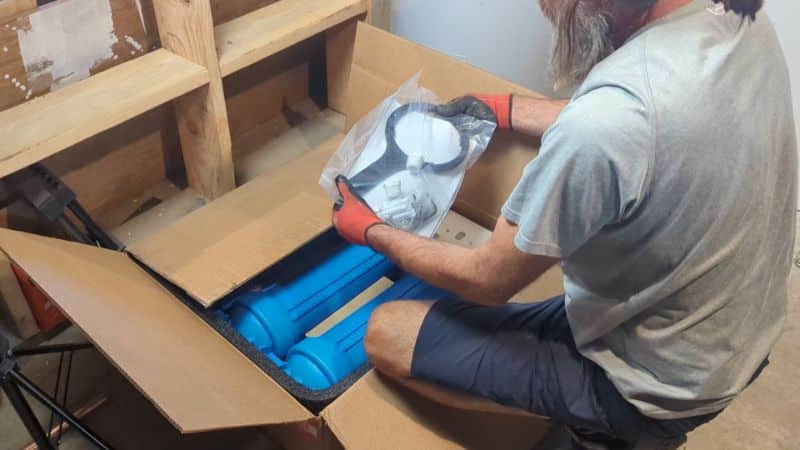
Unexpected Test Results, But Great Scale Reduction
Again, the cartridge used in the Kind E-2000 contains conditioning media, so we wanted to focus more on how effectively it prevented scale formation in our home.
But we also conducted a water quality test because we wanted to evaluate the performance of the carbon filter (remember, this is only available in the E-3000). We tested our water twice, and interestingly, our initial test results showed a 10% decrease in hardness, followed by a 20% increase in the second test. In the first test, calcium levels decreased by 14%, and magnesium by 40%, but these increased by 44% and 55% respectively in the second.
We can’t confirm whether these mineral fluctuations were due to the design of one of the filters, or simply a result of hardness fluctuations in our own water. But either way, the Kind E-2000 isn’t designed to remove hardness minerals, and scale reduction was our main focus.
After following the same preparation steps as for the Futuresoft (cleaning our surfaces with a commercial descaler), we carried out daily monitoring for new scale formation. We still noticed mineral deposits post-install, but they were easier to wipe away with a cloth.
Affordable Cartridge-Based Water Conditioning
We noted a few advantages of the Kind E-2000 compared to tank-based water softeners, and the biggest benefit was the comparative ease of installation.
The install took only about 45 minutes – less than a third of the time it took to install the SpringWell SS. This included shutting off the water, draining our plumbing, cutting into the existing pipe, and installing the unit, which we mounted to our wall. There are just two main plumbing connections, which made the process easy – we actually installed this one ourselves and think it’s much more DIY-friendly.
Maintenance is simple, too. The E-2000 might be built like a filtration system, but just like tank-based conditioners, it’s virtually maintenance-free. The eSoft cartridge lasts for the entire system’s lifespan, and you can spend less than $40 a year on a replacement sediment filter, lubricant, and o-rings if you sign up for Kind’s AutoShip program.
Related: Comparison guide on water softeners vs saltless conditioners
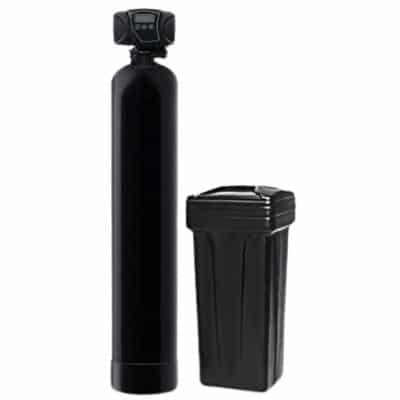
Fleck 5600SXT
In our opinion, the Fleck 5600SXT Digital Control 24-64,000 Grain Water Softener is the top budget-friendly whole house water softening system available today. Why? Because this system has been consistently praised by customers for years – and it costs less than $1,500, making it an absolute steal.
You’re spoilt for choice with the size options available for this system. There are five models to choose from, ranging from 24,000 grains to 64,000 grains. We recommend 32,000 grains for most families of three.
We’d put this system slightly behind the SoftPro Elite, which has a better warranty, an IAMPO certification, and a more efficient performance.
Key Features
- Our top budget pick – With pricing starting at around $1,375, the Fleck 5600SXT is brilliant value for money.
- Programmable USA-made control valve – This softening system’s advanced water flow meter comes with a fully programmable control valve.
- Efficient regeneration – The Fleck 5600SXT doesn’t regenerate until it needs to, minimizing water waste.
Best for
Anyone looking for an affordable whole house water softener offering high-quality performance. Considering this softener’s low upfront cost, excellent warranty and guarantee, and USA-built components, we think it’s a reliable choice for families on a budget.
Pros
- Experienced DIYers will be able to install and configure this unit in a couple of hours. The Fleck softener comes ready to install with a 1. 5 cubic feet high capacity resin, 48,000 grain water softener (10X54) tank, 15x17x36 salt tank with safety float.
- You’ll struggle to find a better-performing softener system for the price.
- We’re pleased with the warranties that come with this system (a 10-year warranty with the tank and a 5-year warranty with the valve). Plus, the folks at customer support are happy to help and know what they’re talking about.
Cons
- The Fleck 5600SXT isn’t as easy to install as alternatives on this list, and you’ll probably need to pay extra to get it professionally installed.
- The 5 and 10-year warranties don’t quite match up to the lifetime warranties offered by SpringWell and SoftPro.
- Unlike SpringWell and SoftPro products, the Fleck 5600SXT doesn’t use certified parts and doesn’t have an IAMPO certification.

On The Go Portable Water Softener
We recommend the On The Go Portable Water Softener as the number 1 portable water softening system on today’s market. This system can be used to protect the plumbing and appliances in your RV or vacation home and delivers soft water for up to two people.
We love how easy it is to use this small but powerful softener – but, as you might expect, you’ll need to manually regenerate the unit with salt.
Key Features
- Two models to choose from – You can buy the On The Go softener in two compact, space-saving models: a 6¾ x 22-inch standard model (8,000 grains), and a 9.5 x 22 double standard model (16,000 grains). If you want to reduce how often you regenerate the system, we recommend the double standard model.
- Simple, speedy regeneration – Although you need to manually regenerate this portable softener, it’s not hard. There’s a large opening to add salt (either table salt or rock salt is fine), and there’s a built-in drain valve and backwash adapters included.
- Test strips included – To check that the softener is working properly, the manufacturer includes some handy hard water test strips in the package.
Best for
Anyone who needs a portable water softening solution that’s both affordable and effective.
Pros
- You don’t need special water softening salt to regenerate this system. You can use normal table salt, since it’s affordable and easy to get your hands on.
- It’s simple to install this system – you just need a standard garden hose connection. Setup is a tool-free process, and we found the installation instructions really easy to follow.
- The media lasts up to 7 years before it needs to be replaced. Aside from adding salt, you don’t need to do much to maintain this system.
Cons
- Take the word “portable” with a grain of salt. While it might be relatively small, this water softening system weighs a hefty 32 pounds, so lifting it might be a two-man job.
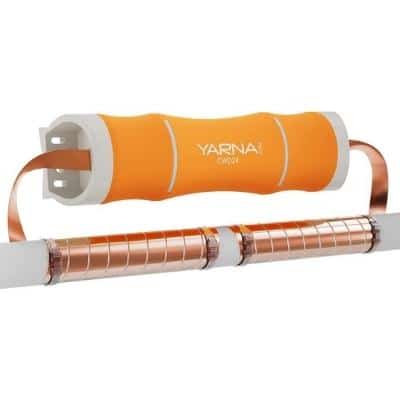
Yarna Capacitive Electronic Water Descaler
In our opinion, the best electronic water descaler available today is the Yarna Capacitive Electronic Water Descaler, an affordable softening alternative that’s designed to reduce scale buildup in pipes and improve the efficiency of appliances in your entire house.
According to this study, electromagnetic water treatment reduces about 50% of scale – pretty effective, considering it uses no salt, no tanks, and no media.
The Yarna Capacitive is our top pick for electronic descaling because it has a better design and more features than other descaler on the market.
Key Features
- Electronic scale prevention method – The Yarna Capacitive doesn’t soften water in a traditional sense. Instead, it uses a changing field of electricity to crystallize hard minerals, preventing them from forming scale on surfaces. This descaling method doesn’t remove beneficial minerals from your home’s drinking water supply, but reduces their unwanted limescale-forming effects.
- Affordable softening solution – The Yarna descaling water system costs only $300 and comes with a guaranteed returns promise in your first year of ownership. That sounds like a great deal in comparison to the cost of standard water softening systems, but the Yarna Capacitive is pretty high-end compared to its closest competitors.
- Ultra-flat impulse bands – Unlike other descalers, this Yarna model doesn’t use round cables to treat water. The unit uses flat impulse bands, which cover twice to three times the surface area of a water pipe and have less spacing, covering 95.7% of the surface.
Best for
Anyone with a small budget who prefers softening systems that don’t have a salt brine tank and don’t require a lot of maintenance. This whole-house electronic descaler is an ideal no-fuss solution for people who don’t want to spend thousands on a tank-based traditional softener.
Pros
- As a saltless descaler, the Yarna Capacitive reduces limescale buildup but doesn’t require salt or a bypass valve, and doesn’t need to regenerate. There’s no GPG limit for this system – it’s effective regardless of your water flow.
- The Yarna is one of the most solidly-built electronic descalers available today, thanks to its resilient, corrosion-resistant, impact-resistant, ABS plastic case. There’s no risk when you buy this system, because you can return it for a full refund within the first year.
- It takes than 15 minutes to install the Yarna, and no maintenance is needed from that moment on. You can install this system on a copper, plastic, iron, or stainless steel pipe up to 1 inch in thickness. Plus, you don’t have to configure anything once you’ve done the DIY – the unit uses a PCB chip that automatically controls the strength of the electronic signals based on your pipe type and water pressure.
Cons
- It may take up to 3 months for this descaler to produce noticeable effects, depending on the hardness of your water supply.
- We’ve read reports from some customers saying that the system didn’t work for them.
📚 Methodology: How We Tested The Best Water Softeners
When researching and testing products for this guide, we focused solely on the water treatment systems that could counter the effects of hard water. We tested conventional ion exchange water softeners as well as salt-free conditioners and descalers.
Here are some of the factors we considered when comparing and ranking the shortlisted systems.
- Technology type – We started by comparing the different technologies that could be used to prevent hardness mineral deposits. We noted that different systems had different benefits and were best suited to different situations:
- Salt-based softeners are best for very hard water or for folks who want to remove hardness minerals from their water, rather than just preventing these minerals from sticking to surfaces. Keep Reading: How ion exchange water softeners work
- Salt-free water conditioners are better suited to folks who want to prevent limescale but enjoy the taste of mineral-rich water or don’t want the hassle of topping up salt.
- Mineral reduction – We were able to compare the performance of the salt-based water softeners we tested by conducting two water quality tests: one before and one after softening our water. This gave us real data that we could use to evaluate how effectively our water had been softened. Note: we couldn’t test water conditioners using this method because conditioners don’t remove hardness minerals.
- Scale prevention – A test that we could conduct for all the softeners and conditioners we reviewed was our scale prevention evaluation. We monitored our showerhead, faucets, and other surfaces that came into contact with water daily, noting our observations. This helped us to determine how effectively a system reduced or prevented scale formation throughout the testing period.
- Grain capacity – For conventional water softeners, we also considered the different sizes/grain capacities available for different situations. To size your water softener, you need to know your water hardness and your average daily water usage. Most of the water softeners we reviewed were available in several different grain capacities to cater to different household sizes and water hardnesses (most people will be fine with a 24,000-30,000-grain system).
- Resin crosslink percentage & durability – This was annother feature we compared for conventional salt-based water softeners. All water softener resins have a crosslink percentage rating, and the higher the percentage, the more durable the resin. We favored systems with 10% crosslink resin, which typically lasts up to 20 years, over systems with a less durable 8% resin.
- Flow rate – Regardless of the type of system we were testing, we considered flow rate as an important measure of performance. Water softeners are point-of-entry systems, so they need adequate flow to prevent a reduction in water pressure around the home. We found that the average water softener or conditioner flow is between 7 and 12 GPM. The larger the system’s capacity, the higher the flow rate. Again, most of the systems we tested had multiple size and flow rate options, allowing us to choose the right flow for our house size and water usage.
- Regeneration method – Another consideration we made for conventional water softeners was their regeneration method. Older, less efficient water softeners regenerate based on a timer, meaning they often regenerate before they need to, wasting salt and water. We only shortlisted systems that use demand-initiated regeneration, based on water usage, because they’re much more efficient and less wasteful.
- Installation & maintenance requirements – We know that people have different opinions when it comes to the difficulty and frequency of installation and maintenance, so we made sure to review and recommend systems with a range of requirements. Installing a tank-based system is difficult, and conventional softeners need frequent (but easy) maintenance in the form of salt topups. Water conditioners are easier to maintain because the conditioning media lasts years, and cartridge-based systems are generally easier to install. Check out our full guide on water softener maintenance here.
- Official certifications – Our main priority was to conduct our own hands-on testing to determine the performance capabilities of our shortlisted water softeners. But we also looked for certifications as further proof of performance and design quality. The main certification for conventional cation exchange softeners is NSF 44, which means a system can remove hardness to below 1 grain per gallon, and meet structural integrity and material safety requirements. There’s also NSF/ANSI 372, for lead-free design.
- Price & value for money – Water softeners are on the pricier side because they’re whole-home systems, but we still wanted to recommend different options for different budgets. In our research, we found that most water softeners are priced around the $1,000-$1,500 mark. The bigger the system’s capacity, the higher the cost. We got the best value for money from the salt-free conditioners we tested because they don’t have an ongoing maintenance spend for salt top-ups.
- Company – We only reviewed water softeners sold by reputable manufacturers with good company offerings. This included some form of warranty (at least 1-2 years), a fair and transparent returns policy, and helpful customer support.
✅ Specific Softening System Buying Guides
❔ Frequently Asked Questions
Which water softener is best for home?
Based on our own hands-on testing, we think the SpringWell Salt-Based Water Softener System is the best salt-based water softening system for use in homes, and the SpringWell Futuresoft Salt-free Water Softener is the best salt-free system.
What size water softener do I need for a family of 6?
The right-sized water softener for a family of 6 depends on your water hardness. If your water hardness is only around 5-10 GPG, a 32,000-grain water softener is a good size. If your water hardness is between 21 and 30 GPG, a 64,000-grain water softener will be more effective. Also consider your household size – generally, the bigger your home and the more bathrooms you have, the bigger the softener you’ll need.
How do I know which water softener to buy?
You can read buyers’ guides like ours, look at customer feedback, and compare the features and tech specs of different water softeners to know which one to buy. Start by testing your water hardness (if you don’t know this already) and calculate your daily water usage. This will help you to choose the right-sized water softener. When it comes to choosing between brands, see what the experts are recommending. There are likely several water softeners that are ideal for your budget and situation.
Are whole house water softeners worth it?
Whole house water softeners are an expensive investment, but they’re worth it for you if you want to eliminate the effects of hard water. You’ll be able to save money after installing a water softener by improving your appliance efficiency, using less soap, and no longer having to buy scale-removal products. When determining whether or not a water softener is worth it for you, think about your current experience with hard water and how much you would value never having to deal with water hardness issues again.
Are some water softeners better than others?
Yes, some water softeners are better than others. For instance, some can prevent scale more effectively than others, and some perform more efficiently, so they waste less water and salt. That’s why it’s important to do your research, look at expert recommendations, and read up on customer experiences before you invest your money.
Is there anything better than a water softener?
If you want to eliminate the effects of hard water in your home, then no, there’s nothing better than a water softener. Water softeners are the only systems that actually remove hardness minerals However, a salt-free conditioner might be better for you if you don’t want to use salt or alter your water quality.
How many years does a water softener last?
Most salt-based systems have a lifespan of 10-15 years. With proper maintenance, salt-free systems last 10-20 years, or longer, depending on the type of system. You may need to replace the media in this time.

